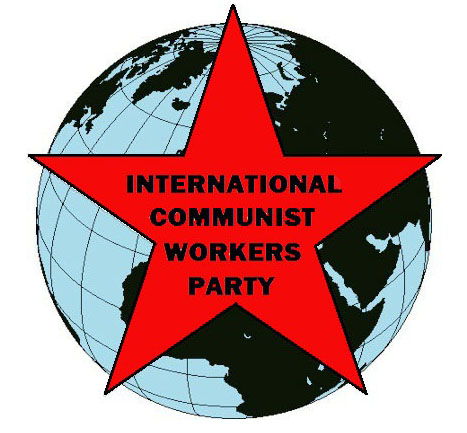
 |
FIGHT FOR COMMUNISM! |
International Communist Workers Party | |

The previous article described how the Chinese Cultural Revolution began among Beijing students in May 1966.
In the fall, Red Guard units formed in factories and other workplaces. Some (like the Shanghai Scarlet Guards) were loyal to local Communist Party organizations. Others were “Rebel” Red Guards, ready to take the Cultural Revolution much further than Mao had ever intended.
By November 1966, the movement to criticize the “bourgeois reactionary line” had emboldened masses of workers to rise up against the many ways they were still exploited as wage-slaves. For example, thousands of Shanghai apprentices staged a sit-in in the city center in December 1966 as part of a mass strike for better pay and working conditions. The Cultural Revolution had erupted into open class struggle.
That wasn’t what Mao wanted. His goal of discrediting Liu Shaoqi and Deng Xiaoping had been accomplished. He was ready to let the movement die down. But the workers wouldn’t stop.
Many Party organizations were no longer functioning. Masses began to turn to rebel groups of students and workers for leadership. Within the Chinese Communist Party (CCP) the Central Cultural Revolutionary Group became more powerful than the Central Committee and Politburo.
Mao and his leading Group were anxious to restore “order” and get production moving. They called on the rebel groups to “seize power.” That meant taking over paralyzed party bodies, occupying their offices and carrying out their functions. In practice it meant reform of the system, not revolution.
Actually, Mao was not leading anything. The rebel groups were already taking over the functions of party bodies in many schools, factories and localities. Instead, Mao was trying to regain control over the situation and prevent real revolution.
The Shanghai Commune
Shanghai was China’s largest and most industrialized city. The Cultural Revolution took it by storm – especially when workers joined in. In October 1966, “rebel” groups had allied as the “Headquarters of the Revolutionary Revolt of Shanghai Workers” (Workers’ Headquarters). They demanded that the Shanghai party committee replace the old bureaucracy with new popular organs.
When the demands were refused, masses of workers seized a Beijing-bound train. They intended to present their demands to Mao, but the train was intercepted and held up in a suburb. Half of the workers remained on board, sparking a three-day siege.
Beijing first responded with a warning against disobeying party instructions. Workers were told to get back to the factories. But a second message ordered Shanghai authorities to legalize Workers’ Headquarters and agree to its demands. The rulers could no longer rule in the old way.
On December 30, better-paid workers organized as Scarlet Guards rallied, twenty thousand strong, to defend the Shanghai party office. Workers’ Headquarters (mostly part-time or temporary workers) attacked the Scarlet Guards, who surrendered after hours of bloody fighting. An already-fierce propaganda war escalated through wall-posters and mass demonstrations.
A few days later, the Workers Headquarters – now boasting one hundred thousand members — announced the “overthrow” of the city’s party structure to a mass rally of about one million. They now demanded a “Shanghai Commune” modeled on the egalitarian principles of the Paris Commune of 1871, as promised in the “16 Point Decision” issued by the Party leadership in August 1966.
Beijing sent Zhang Chunqiao, a leftist cadre originally from Shanghai, to intervene. Zhang had close ties with Shanghai-area army commanders. He intimidated young activists with personal instructions from Mao. He convinced workers that fighting exploitative conditions was “economism.”
Zhang brokered a deal that announced the formation, in early February, of the “Shanghai Commune.” But it was not a mass-participation government like the 1871 Paris Commune. Instead, it was controlled by the Maoists in Beijing.
The Paris Commune, the first successful workers’ revolution, established a radical democracy but it was not a model for communism. It capped salaries but did not eliminate them. It organized workers’ cooperatives to reorganize factories but it did not promote the communist principle, “from each according to ability, to each according to need.” The Shanghai workers needed to go much further. Instead, Mao pulled them back.
He insisted that Shanghai needed a “Revolutionary Committee” instead of a Commune. This would consist of army officers, “revolutionaries” from the old party leadership, and representatives of the mass organizations. The rebel organizations agreed—some very reluctantly. The January storm was over—for now.
Workers continued to be involved in Shanghai’s administration until Deng Xiaoping came to power in 1978. Across China, however, the members of Revolutionary Committees were mostly selected in back-room deals in Beijing. They were dominated by the military.
Mao had made a concession to the masses by endorsing their “seizure of power.” But he then negated it. It would take some months for “rebel” groups to grasp this new development and begin to formulate a response.
Next: Political struggle within the People’s Liberation Army and the Wuhan Incident